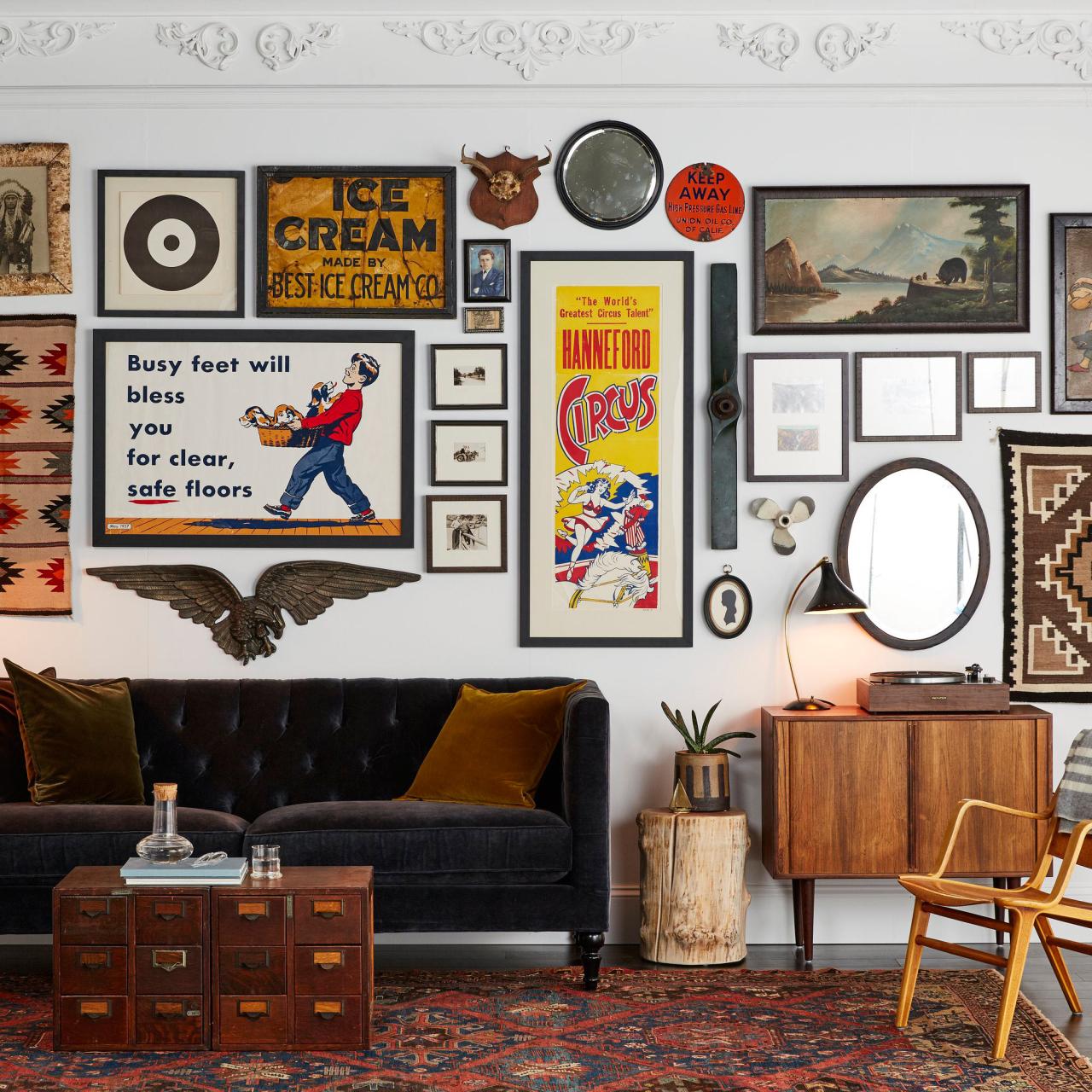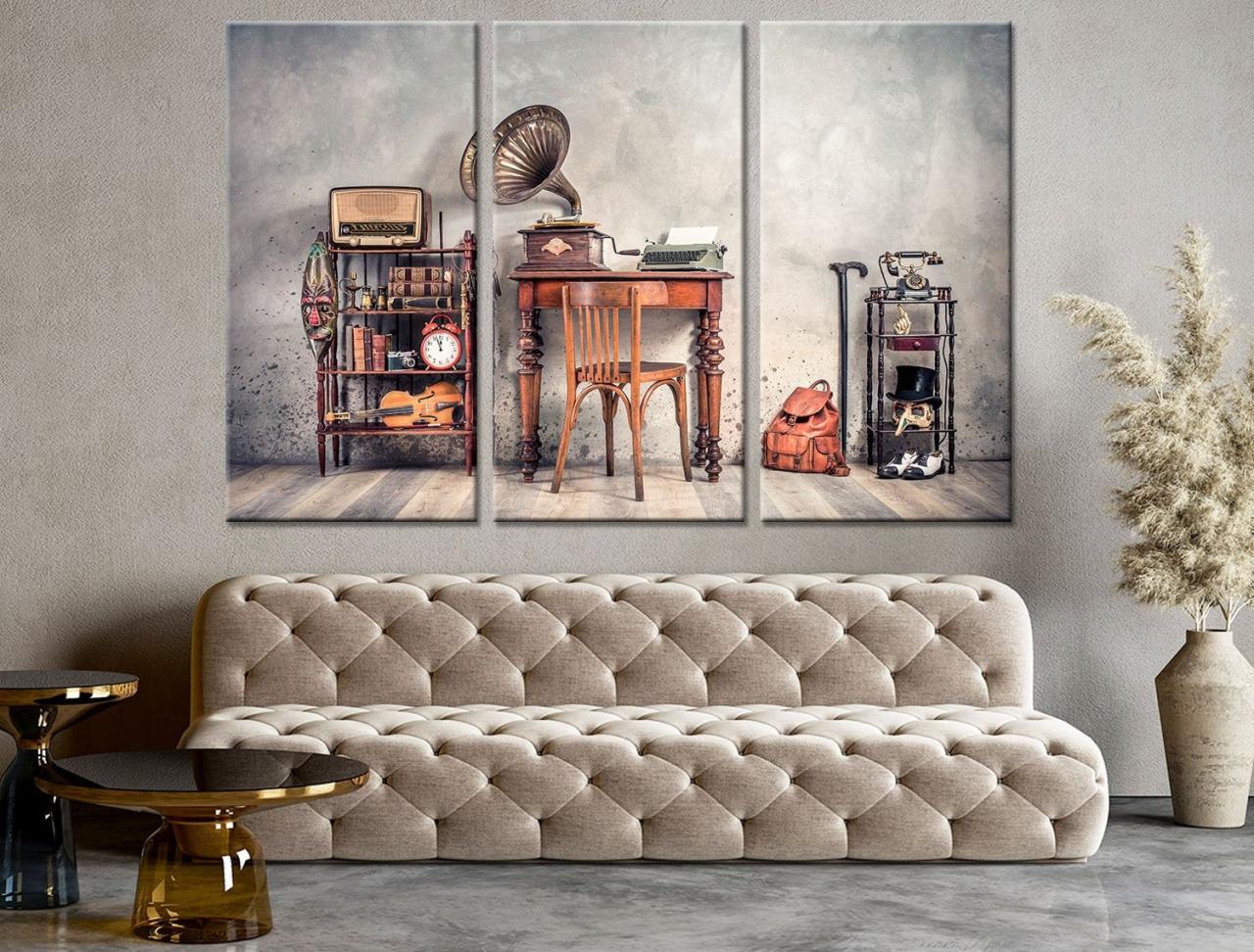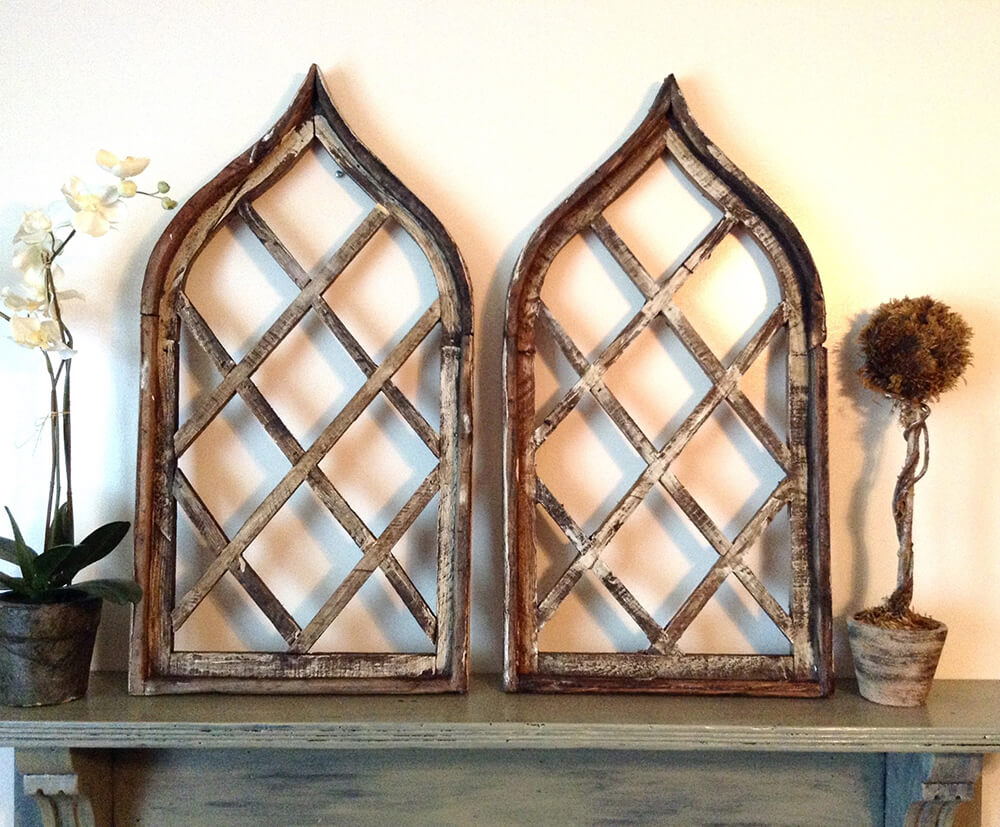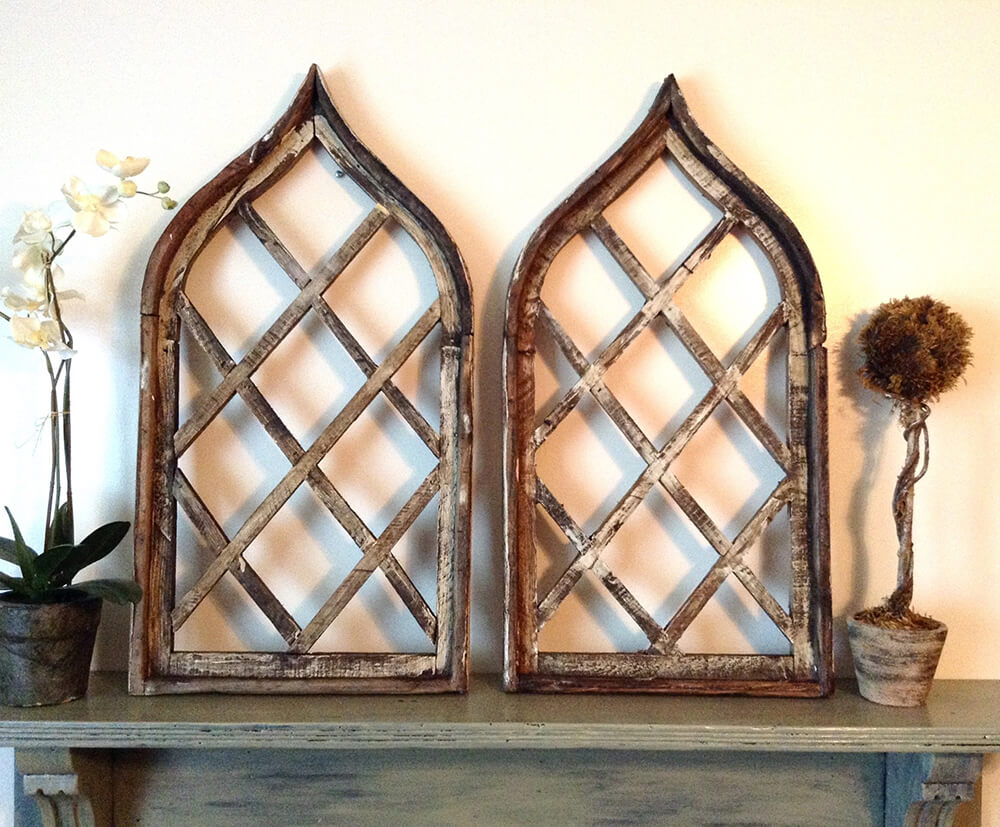Vintage wall art decor, a captivating blend of nostalgia and artistic charm, invites us on a journey through time. From antique paintings to mid-century prints, each piece tells a unique story, adding character and depth to any living space.
As we delve into the world of vintage wall art, we’ll explore its rich history, diverse materials, and inspiring display techniques. Whether you’re an avid collector or simply appreciate the beauty of bygone eras, this guide will provide valuable insights and practical tips to enhance your appreciation of this timeless art form.
Definition of Vintage Wall Art Decor
Vintage wall art decor encompasses a wide range of artistic creations that have stood the test of time, exuding a unique charm and nostalgia. These pieces typically originate from past eras and possess distinctive characteristics that set them apart from contemporary wall art.
The allure of vintage wall art decor lies in its ability to evoke memories, spark conversations, and add character to any space. It transcends mere aesthetics, becoming a testament to the passage of time and the enduring appeal of bygone eras.
Types of Vintage Wall Art Decor

Vintage wall art decor encompasses a wide range of styles and mediums, each offering unique charm and character to any living space. From classic paintings to vibrant posters, there is a vintage wall art piece to suit every taste and decor scheme.
Here are some common types of vintage wall art decor:
Paintings
- Oil paintings: Characterized by their rich colors and detailed brushwork, oil paintings are often found in traditional and formal settings.
- Watercolor paintings: Known for their delicate and ethereal qualities, watercolor paintings add a touch of softness and tranquility to any room.
- Acrylic paintings: Versatile and durable, acrylic paintings offer a wide range of textures and styles, from abstract to realistic.
Prints
- Lithographs: Created by printing an image from a stone or metal plate, lithographs often feature intricate details and a distinctive grainy texture.
- Etchings: Produced by etching an image into a metal plate and then printing it, etchings typically have fine lines and delicate shading.
- Woodcuts: Carved into a wooden block and then printed, woodcuts are known for their bold, graphic lines and simple forms.
Posters
- Advertising posters: Designed to promote products or services, vintage advertising posters often feature vibrant colors and eye-catching imagery.
- Movie posters: Showcasing iconic film stills and artwork, vintage movie posters add a touch of nostalgia and glamour to any room.
- Travel posters: Depicting exotic destinations and landmarks, vintage travel posters evoke a sense of adventure and wanderlust.
Tapestries
- Woven tapestries: Intricately woven with threads or yarns, woven tapestries create a rich and textured focal point.
- Embroidered tapestries: Embellished with needlework and embroidery, embroidered tapestries add a touch of elegance and craftsmanship to any space.
- Needlepoint tapestries: Created by stitching yarn through a canvas, needlepoint tapestries are known for their intricate patterns and detailed designs.
Materials Used in Vintage Wall Art Decor

Vintage wall art decor is crafted from a wide range of materials, each contributing to its unique aesthetic and durability.
One of the most common materials used in vintage wall art is wood. Wood is versatile and can be carved, painted, or stained to create a variety of looks. It is also a durable material that can withstand the test of time.
Metals
- Copper:Copper is a warm and inviting metal that adds a touch of elegance to any room. It is also relatively easy to work with, making it a popular choice for vintage wall art.
- Brass:Brass is a strong and durable metal that has a golden hue. It is often used in vintage wall art with intricate designs.
- Iron:Iron is a heavy and durable metal that has a dark, rustic appearance. It is often used in vintage wall art with industrial or farmhouse themes.
Other Materials
- Glass:Glass is a delicate and beautiful material that can be used to create a variety of vintage wall art pieces. It is often used in stained glass windows or in decorative mirrors.
- Ceramic:Ceramic is a versatile material that can be used to create a variety of vintage wall art pieces. It is often used in tiles or in decorative plates.
- Textiles:Textiles are a great way to add a touch of warmth and texture to vintage wall art. They can be used in tapestries, wall hangings, or even as a backing for framed artwork.
Displaying Vintage Wall Art Decor

Displaying vintage wall art decor effectively enhances its aesthetic appeal and integrates it seamlessly into your home’s ambiance. Consider the following tips for optimal display:
Hanging Methods, Vintage wall art decor
- Picture Frames:Frame your vintage wall art to protect it and elevate its presentation. Choose frames that complement the artwork’s style and the room’s decor.
- Shadow Boxes:Create a three-dimensional display for vintage objects like postcards, photographs, or small sculptures. Shadow boxes provide depth and add a touch of nostalgia.
- Floating Shelves:Display vintage wall art on floating shelves to create a minimalist and modern look. This method allows you to easily rearrange and swap out pieces as desired.
Arrangements
Arrange your vintage wall art in a balanced and visually pleasing manner:
- Symmetrical:Create a formal and orderly display by arranging artwork symmetrically on either side of a focal point, such as a fireplace or a large mirror.
- Asymmetrical:Achieve a more dynamic and eclectic look by placing artwork in an asymmetrical pattern. This arrangement allows for more creative freedom and visual interest.
- Grid:Hang your vintage wall art in a grid pattern to create a cohesive and organized display. This method is particularly effective for small-scale artworks or collections.
Incorporating into Room Styles
Integrate vintage wall art into various room styles to add character and charm:
- Bohemian:Vintage wall art with ethnic patterns, vibrant colors, and eclectic themes complements the free-spirited and eclectic ambiance of bohemian interiors.
- Modern Farmhouse:Rustic vintage wall art, such as metal signs, wooden carvings, and vintage maps, adds warmth and character to modern farmhouse-style spaces.
- Scandinavian:Minimalist vintage wall art in neutral tones and simple designs blends seamlessly with the clean lines and airy aesthetic of Scandinavian interiors.
Restoration and Preservation of Vintage Wall Art Decor
Preserving and restoring vintage wall art decor is crucial to maintain its historical significance, aesthetic appeal, and monetary value. It involves employing specialized techniques and materials to repair damage, prevent further deterioration, and enhance the piece’s overall condition.
Common restoration techniques include cleaning, repairing cracks or tears, filling in missing areas, and applying protective coatings. Materials used may include adhesives, paints, solvents, and varnishes, all carefully chosen to match the original materials and techniques used in the piece’s creation.
Preventing Damage
To prevent damage to vintage wall art decor, it’s essential to:
- Avoid direct sunlight, which can cause fading and discoloration.
- Maintain a stable temperature and humidity level to prevent warping or cracking.
- Handle with care to avoid scratches or breakage.
- Display in a secure location to minimize the risk of accidental damage.
- Regularly clean using a soft, dry cloth to remove dust and debris.
Wrap-Up
Vintage wall art decor transcends mere decoration; it’s a testament to the enduring power of creativity and a reflection of our collective past. By incorporating vintage pieces into our homes, we not only add aesthetic value but also create a tangible connection to the stories and styles that have shaped our world.
Question Bank
What are the different types of vintage wall art decor?
Vintage wall art decor encompasses a wide range of styles, including paintings, prints, posters, tapestries, and photographs.
How can I identify authentic vintage wall art?
Look for signs of age, such as patina, fading, or wear. Examine the materials and construction techniques to determine the piece’s era.
How should I display vintage wall art effectively?
Consider the size, shape, and color of the piece when choosing a location. Experiment with different hanging methods, such as frames, shelves, or hooks.

